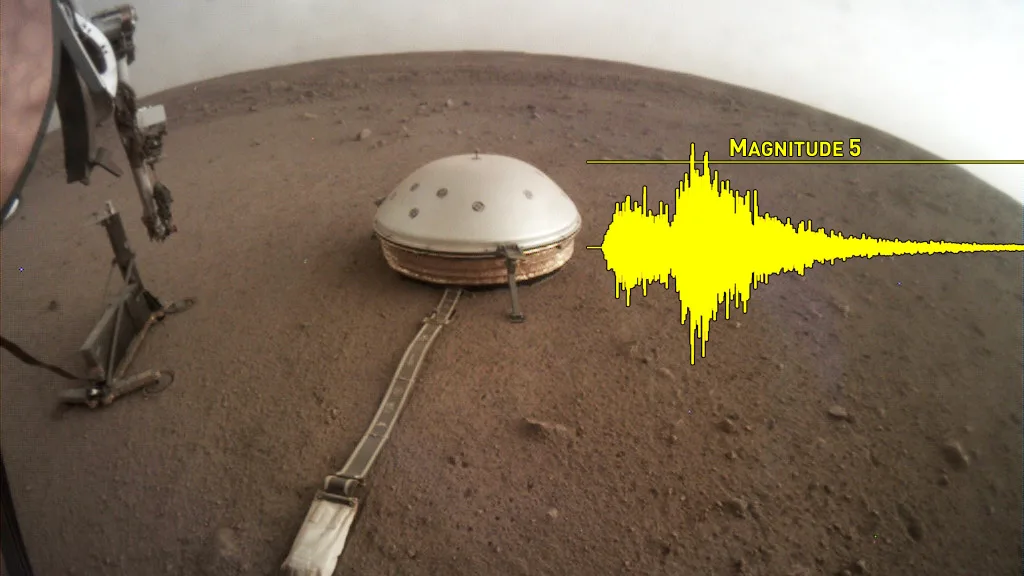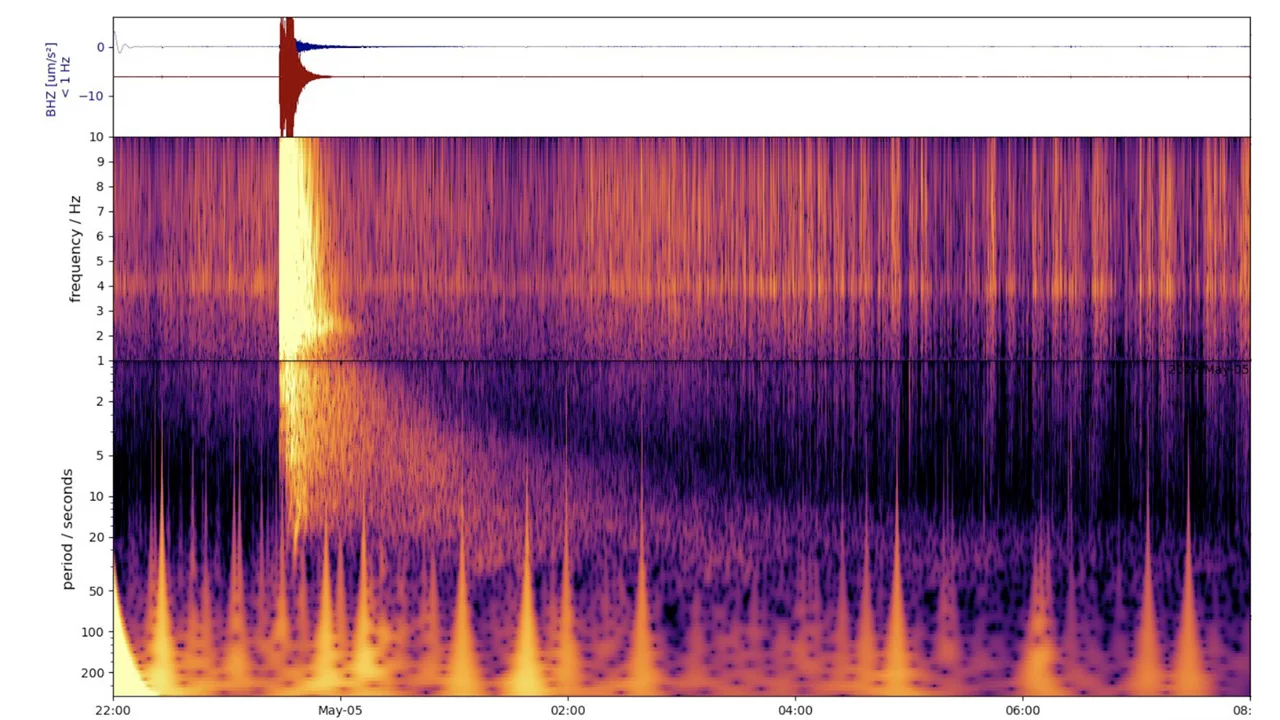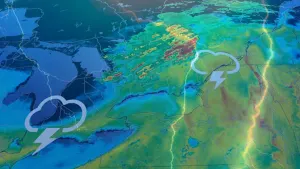
NASA's InSight lander just detected a 'monster' quake on Mars
"This quake is sure to provide a view into the planet like no other."
NASA's InSight lander finally detected "The Big One" on Mars.
Since it touched down on Mars in November 2018, the InSight lander has catalogued over 1,300 marsquakes — tremors through the planet's surface caused by either meteorite impacts or due to the cooling of the inside of the planet.
So far, the marsquakes detected by InSight's Seismic Experiment for Interior Structure (SEIS) instrument do not measure up the same magnitudes as those we feel here on Earth. While earthquakes up to magnitude 9.5 have been recorded here, those on Mars are significantly weaker. That's been a bit of a problem for InSight's core mission, and literally so.

This view from InSight's Instrument Context Camera (ICC) shows an early shot from the mission, with SEIS (under the white dome) sitting on the ground in Elysium Planitia. Credit: NASA/JPL-Caltech
We know so much about Earth's interior because scientists collected earthquake data and compared how these quakes looked to different seismometers around the world. It came down to observing subtle differences in timing as the vibrations from the quakes travelled through the various layers inside the planet — the crust, the mantle, and the core.
Leading up to this mission, planetary scientists had some reasonable ideas about the interior structure of Mars. However, it wasn't until InSight deployed its seismometer that they started getting an authentic look at the planet's core. There was still a challenge for the mission team, though. For the most part, marsquakes recorded by InSight have been relatively weak, and small quakes can only provide a small amount of data. That made getting a clear picture more difficult.

An artist's impression of Mars' interior (left) is compared to SEIS data (center), to show where the boundaries exist between the layers of the planet's interior (right). Credit: NASA/Deng & Levander, 2020/GRL/Scott Sutherland
Until a week ago, the strongest marsquake recorded by InSight was in August 2021, at an estimated 4.2 magnitude. About 10,000-12,000 earthquakes of that magnitude happen on Earth every year, but this tremor was a rarity on Mars.
Then, on May 4, InSight's team at NASA's Jet Propulsion Laboratory received a pleasant surprise. SEIS picked up the largest marsquake the mission has seen so far — estimated at magnitude 5!

This spectrogram from InSight's SEIS shows the magnitude 5 marsquake recorded on May 4, 2022, the 1,222nd Sol of the mission. Credits: NASA/JPL-Caltech/ETH Zurich
While that would only be a moderate quake here on Earth, it's considered 'the Big One' for Mars!
"Since we set our seismometer down in December 2018, we've been waiting for 'the big one,'" Bruce Banerdt, InSight's principal investigator at NASA JPL, said in a statement. "This quake is sure to provide a view into the planet like no other. Scientists will be analyzing this data to learn new things about Mars for years to come."

The seismogram of the Sol 1,222 marsquake. Credits: NASA/JPL-Caltech
As of the end of 2020, InSight had already completed its primary goal. By then, it had provided enough data to show that Mars was seismically active. Also, the tremors it picked up gave the mission scientists enough data to get a reasonable idea of what the planet's interior looked like. Everything since then has simply been a bonus for the mission.
Seeing this record-setting marsquake may have been a stroke of extraordinary luck.

This 'selfie' image of InSight is a composite of pictures taken by the Instrument Deployment Camera on the lander's arm. It shows the already dusty state of the lander's deck and solar panels as of March and April 2019. Credit: NASA/JPL-Caltech
According to NASA, InSight has been dealing with some issues in its extended mission on Mars, mainly due to dust accumulating on its solar panels. While the team has come up with some creative solutions for dealing with that problem, power to keep the lander operating is becoming scarce.
"On May 7, 2022, the lander's available energy fell just below the limit that triggers safe mode, where the spacecraft suspends all but the most essential functions," NASA said. "This reaction is designed to protect the lander and may occur again as available power slowly decreases."
Although InSight's mission is currently set to continue through to the end of this year, the space agency is holding a press conference next week to discuss the lander's accomplishments, its power issues, and the future of the mission.










